 | William Frend - Algebra - 1796 - 688 pages
...a number may be eafily found by the logarithmic tables, by multiplying the logarithm of the number into the index of the power to which it is to be raifed, and taking the number corre» fponding to the logarithm thus found out of the tables. In the... | |
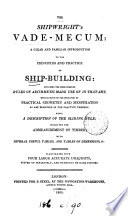 | David Steel - 1805 - 392 pages
...20l4=Iogarithm of 159, the Answer. INVOLUTION BY LOGARITHMS. MULTIPLY the logarithm of the root by the index of the power to which it is to be raised ; the product is the logarithm of the answer. Required the 5th power of 1 1 . Logarithm of 1 1 = 1... | |
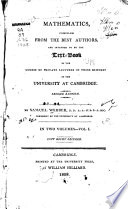 | Samuel Webber - Mathematics - 1808 - 466 pages
...To involve, or raise, surd quantities to any pewer. HULK. / ? Multiply the index of the quantity by the index of the power, to which it is to be raised, and annex the result to the power of the rational parts, and it will give the power required. • EXAMPLES.... | |
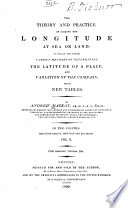 | Andrew Mackay - Latitude - 1809 - 414 pages
...toßnd the Square, Cube, c^c. nf 'any given Number, RULK. Multiply the logarithm of the given number by the index of the power to which it is to be raised, and the product will be the logarithm of the power sought. EXAMPLES. I. Required the square of 38 ?... | |
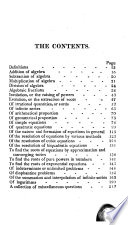 | John Bonnycastle - Algebra - 1811 - 230 pages
...PROBLEM VIII. To involve surd quantities to any power. RULE. Multiply the index of the quantity by the index of the power to which it is to be raised, and to the result annex the power of the rational parts, and it will give the power required. EXAMPLES.... | |
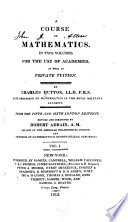 | Charles Hutton - Mathematics - 1812 - 620 pages
...any Power. RAISE both the rational part and the surd part. Or multiply the index of the quantity by the index of the power to •which it is to be raised, and to the result annex the power of the rational parts, which will give the power required. EXAMPLES.... | |
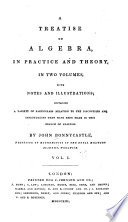 | John Bonnycastle - Algebra - 1813 - 456 pages
...less one, and the last product will be the power required. Or, multiply the index of the quantity by the index of the power to which it is to be raised, and the result will be the same as before. Note. When the sign of the root is + , all the powers of... | |
 | Jeremiah Day - Algebra - 1814 - 304 pages
...And — ax— a=a*, 220. A quantity which is already a power, is involved by multiplying its index, into the index of the power to which it is to be raised. 1. The 3d power of a3 , is a3l"s=a* For as =aa; .and the cube of aa is aay aa x aas=aaaaaa=a° J which... | |
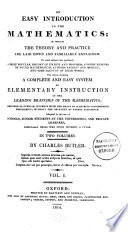 | Charles Butler - Mathematics - 1814 - 540 pages
...for the rational part of the power, (Art. 265 to 267. Part I.) II. Multiply the index of the surd by the index of the power to which it is to be raised, and the product will be the surd part. III. Annex the rational part of the power to the surd part,... | |
 | John Bonnycastle - Algebra - 1818 - 284 pages
...square, cube, biquadrate, &c. of any given quantity. RULE I. Multiply the index of the quantity by the index of the power to which it is to be raised, and the result will be the power required. Or multiply the quantity into itself as many times less... | |
| |